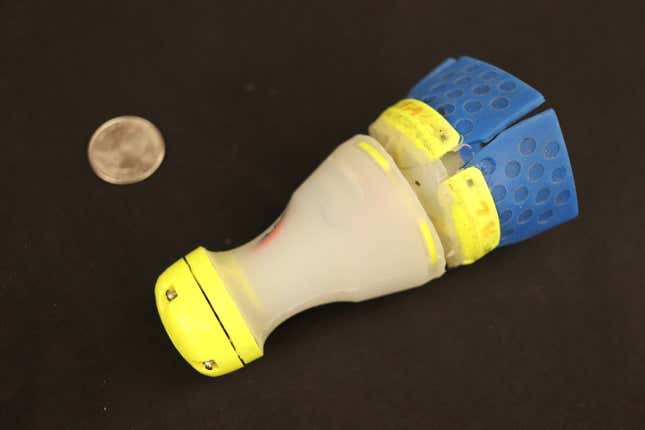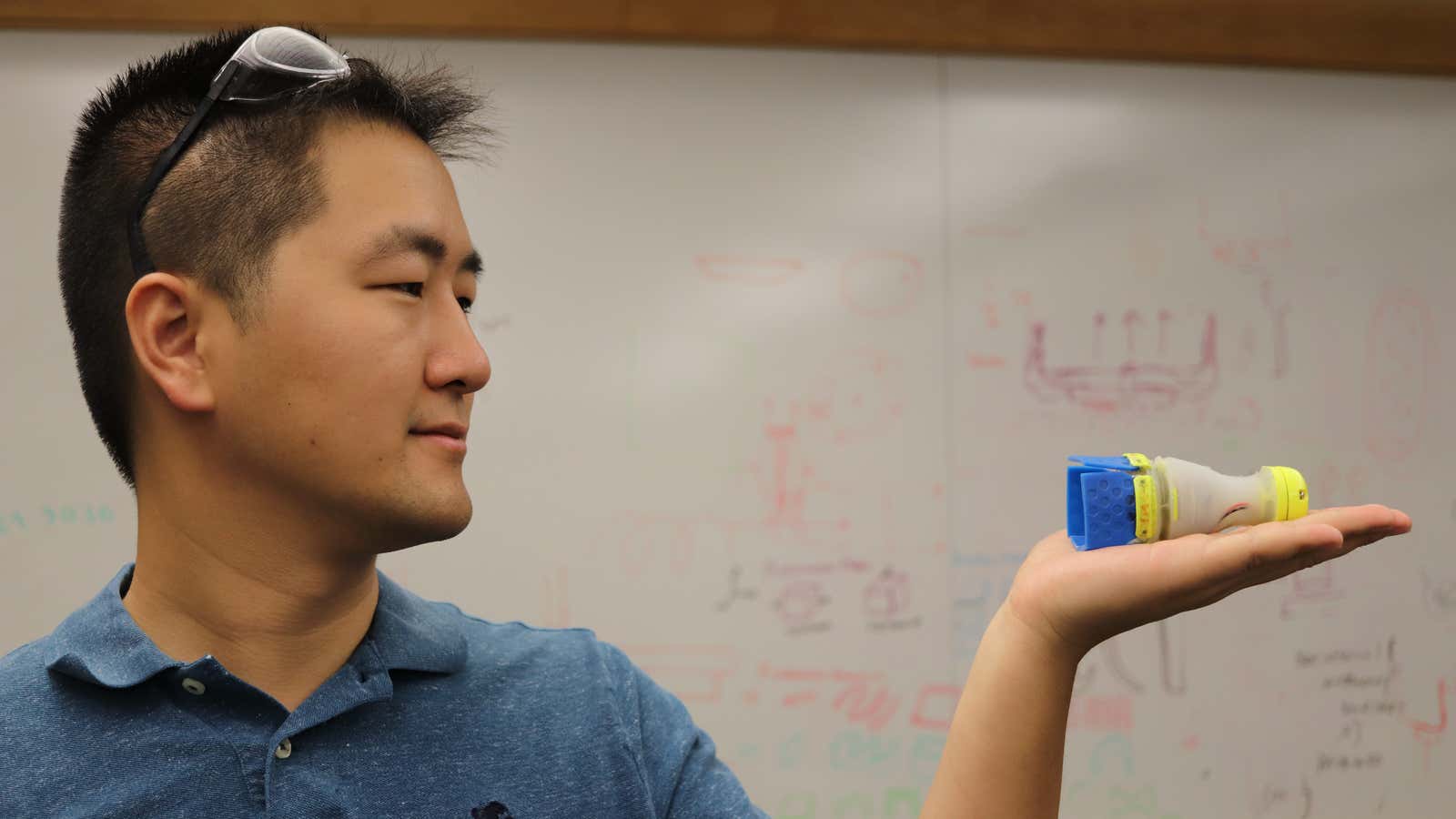Around the world, one in five people don’t have enough water, according to the United Nations, but that’s not because there isn’t enough fresh water for people to drink, bath, wash their clothes, or even water their lawns. It’s mainly because either the water has been polluted, pipes don’t exist to take water from lakes and streams, or aging infrastructure allows water to leak.
In 2008, Saudi Arabia approached MIT’s Mechatronics Research Laboratory to fund new technologies to help tackle the third problem. The country, notorious for its expensive desalinated drinking water, was losing one-third of its water every day due to leaking pipes, but existing detection methods, developed for metal pipes, proved incompatible with the plastic infrastructure.
After nine years of research and development, You Wu, a fifth-year MIT mechanical engineering PhD candidate, has created an elegant solution. His invention: Robot Daisy, a flexible intelligent device that resembles a shuttlecock—or a blue-skirted woman, from which it gets its name.
Daisy works by floating through pipes and pinpointing water leaks. When water leaks through a crack in the pipe, it creates suction that grows linearly with its size and can be measured with sensors. These sensors compose Daisy’s rubber skirt. To identify leaks in a pipeline network, a technician inserts her into the underground piping through a fire hydrant, and she logs the location and force of any tugs on her skirt as she floats downstream. Once the technician retrieves her from the pipes, the computer chip storing all the data in her body connects to wifi and downloads a map of the leaks.

The design works regardless of piping material and comes different sizes to accommodate different pipe diameters. It also operates with a higher degree of precision and granularity than traditional acoustic-based technology. This allows Daisy to catch leaks in their early stages, which “could equate to preventing the loss of millions of gallons of water annually,” Mark Gallager, director of engineering and distribution at the Cambridge, Massachusetts water department, told MIT News. It could also “minimize the damage to infrastructure and the loss of water services to homes and businesses” during a pipe failure, he said.
It took 11 prototypes for Daisy to successfully traverse the pipe infrastructure at a testing site in Saudi Arabia. Initial prototypes couldn’t distinguish the suction force from a leak from disturbances from dirt and rust caked on the pipes’ interiors. Nor could they clear sharp turns at T-junctions and adapt to changes in pipe size. Through iterative design improvements, Wu fine-tuned Daisy’s detection software and gave her a squishier body to squeeze around corners and through tighter diameters. Wu is now on prototype 16, which costs $150 of raw materials and four hours to build. He estimates the costs will drop once Daisy is manufactured at scale.
Wu incorporated PipeGuard earlier this year with co-founders Jonathan Miller and Daniel Gomez to commercialize Daisy and the company has raised funding from several pitch competitions, including the Booz Allen Hamilton Data Analytics Award and MIT’s Solve Challenge Finals, and received inquiries from dozens of utility companies and regional governments.
Wu, now in the final year of his PhD, has committed to three customers in the coming year: Wise County, Virginia, which loses nearly half of its water to leaks; the Lingang Industrial Zone in Shanghai, China, which loses 30%; and Monterrey, Mexico, which loses 42%, according to data from the respective utility authorities. After graduation, Wu plans to offer Daisy’s expertise as a service to more cities around the world.
Wu says shortages in electricity growing up in Shanghai influenced his interest in developing something that helps fix water shortages. Factories were then required to stagger work hours to accommodate the energy grid, so he only saw his parents once a week. “I got this feeling of what a shortage of resource feels like, so I have this personal interest of sustainability,” he says.
“I have this fear about the future and about resource shortage,” he continues. “If the population grows to an extent that everyone has to sacrifice something, one day we won’t have water for showers so that someone else will have water to drink. This was basically my personal motivation behind it: How to make sure that one day we won’t have a no shower Mondays.”
